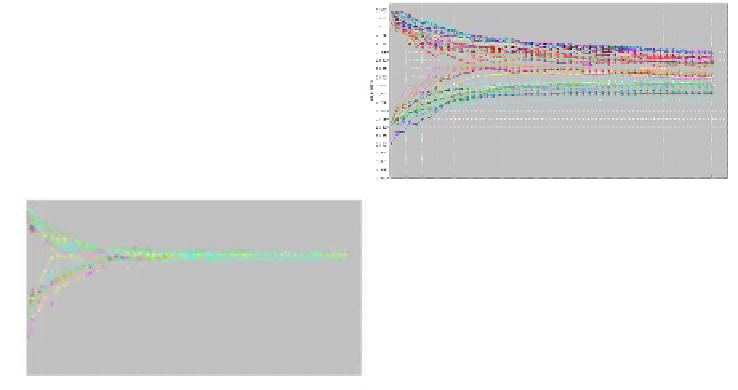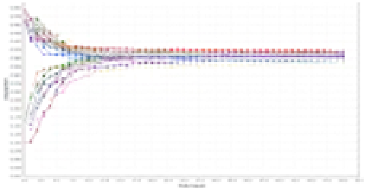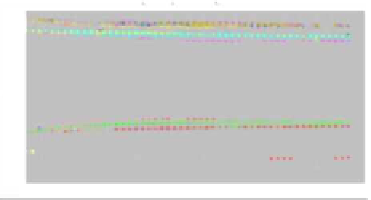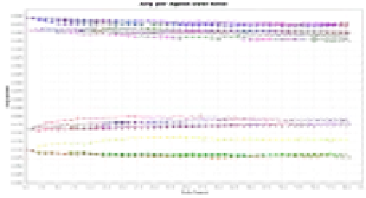Information Technology Reference
In-Depth Information
0.5
0.5
0.4
0.4
0.3
0.3
0.2
0.2
0.1
0.1
d = [0.1,0.3]
d = [0.3,0.6]
5
10
25
30
35
40
45
50
5
10
25
30
35
40
45
50
0
15
20
0
15
20
0.5
0.4
0.3
0.2
0.1
d = [0.6,0.9]
0
5
10
15
20
25
30
35
40
45
50
Fig. 6.
Average change in opinion for each agent through time
average opinions through time for the three scenarios. Especially for the first
scenario a clear segregation into two groups is shown.
6 Discussion
This paper only presents an initial attempt to apply an existing opinion dynam-
ics model to a spatial situation. The original DW model was adapted to deal
with spatial differences in opinions. Based on their initial preferences agents de-
velop an opinion for specific locations. The influence of the spatial environment
on the dynamics of opinions of a group of agents is currently limited to that of
heterogeneity of opinions in the neighborhood of a location. The assumption is
that relative small isolated areas with a agent having a clearly distinct opinion
are more vulnerable to be changed under influence of a opinions of other agents.
In other words, (spatially) isolated opinion results into weakening of this opinion.
The question is if this is true? The opposite situation i.e. hardening of opinions
in case of isolation would also be possible. Not much is know about the pro-
cesses involved in spatial opinion dynamics. Except from vague notions such as
NIMBY (not in my backyard) reactions of citizens on spatial plans affecting their
immediate living environment [23, 24], not much is known about the effects of
spatial factors such as distance, size, shape, and topological relations. The used
model, based on the Deffuant-Weisburg approach is rather limited, and only al-
lows for the representation of opinion dynamics at a aggregate level. Multi-actor
spatial planning has a multi-goal and multi-issue characteristic, which increases
the complexity of the opinion dynamics. The suitability of the DW approach to
represent this complexity is not yet clear and needs further attention. Although
in the presented model factors such as social distance (
d
) are made dynamic










